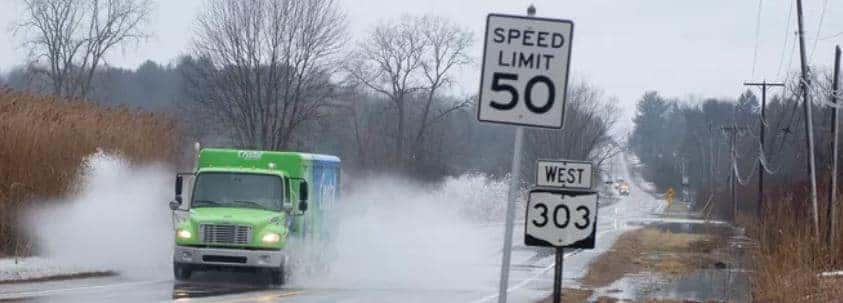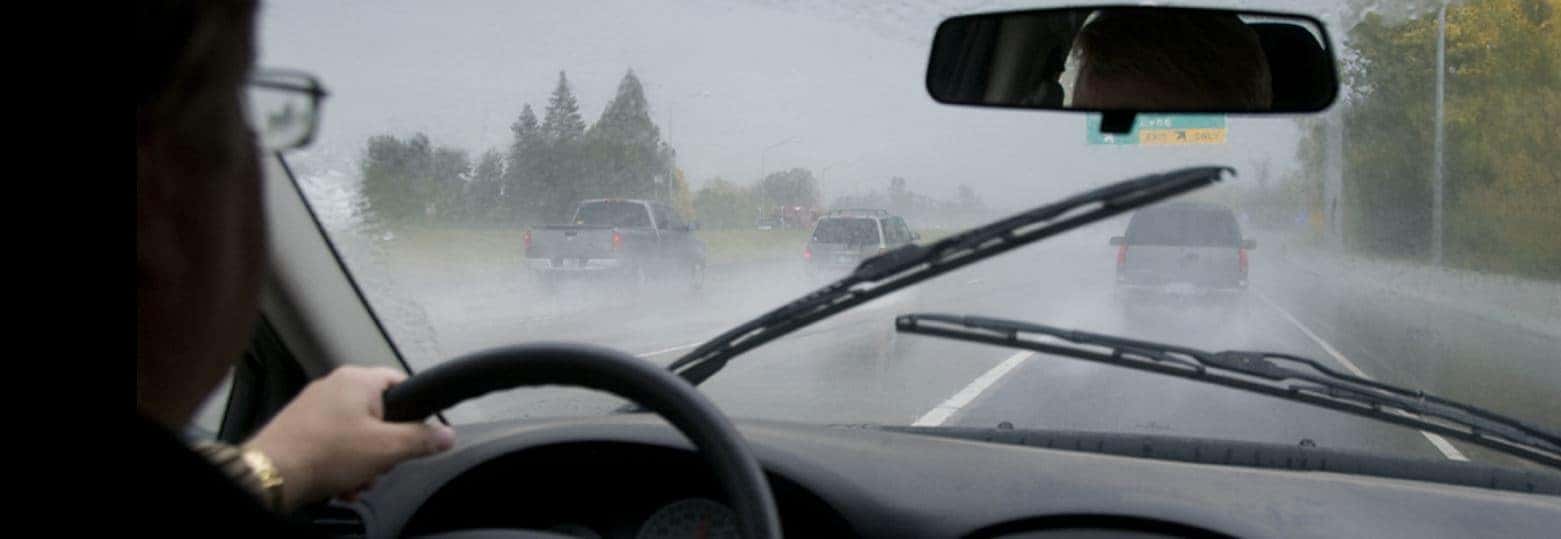We are no stranger to the rain. In fact, on average there is precipitation more than 40% of our days in a year. They say rain makes everything beautiful and here in the pacific northwest that beauty is truly all around us.
While we may pride ourselves on our preparedness for the drizzle and our lack of need for an umbrella, the truth is that despite that readiness, wet road conditions can be extremely dangerous. However, there are many strategies to make the weather less hazardous to yourself and fellow motorists. While many drivers simply slow down as their only safety precaution when it begins to rain, reducing speed is just one crucial element of navigating wet conditions. Here are some other helpful tips that drivers should be aware of to remain safe while it pours outside.
Here are our tips for driving safely in the rain:

Keep your lights on: When you have your lights on, not only is your visibility improved but just as importantly, others can see you. Though many newer cars come with automatic running lights, you should make sure to turn on headlights so that your taillights come on as well. When all lights are on, other drivers can easily see all sides of your vehicle. Avoid using your high beams during the heavy rain as they will just reflect off wet surfaces and cause visibility issues for oncoming drivers.

Drive slower: Like we mentioned before, this one is a no-brainer. Slowing down your speed can help you maintain control of your vehicle and prevent your car from hydroplaning. Most drivers move slower when there is water on the road, so driving below the speed limit is encouraged so everyone remains safe.

Avoid passing through standing water: Most people have probably made this mistake at some point in their driving career. One usually can’t tell how deep the standing water can be, so it’s always best to avoid it. You don’t want to be the person who underestimates the depth of the puddle and cause damage to your vehicle by driving through it—or worse, having your vehicle become flooded, stranded, and in need of a tow.

Don’t panic if you hydroplane: Hydroplaning is when the ground is wet and your vehicle loses traction while driving, sliding much like it would on ice. In the instance of hydroplaning, do not panic. As scary as it is, you need to remain calm to keep control over your vehicle. Do not slam on your brakes, as it will only make things worse. Steer into the skid and slowly pump your brakes until your vehicle regains traction.

Know your roads & only drive if you must: While it’s raining out (especially if its heavy), it might not be the time to explore the backroads. It’s one thing if you’re on the road already or you need to get home, but if not, ask yourself if you are prepared to handle this kind of weather. Roads are built to withstand different weather conditions in different parts of the country, so if you’re new the area, use extra caution while it’s wet outside.

Make sure your tires are in good condition: The chances of your vehicle hydroplaning in the rain increase significantly if your tires are worn down. You can use the “Penny Test” to check your tire tread to see if it is time to replace your tires.
Here’s how to do it—first, place a penny in the tread of your tire. Turn the penny so that Lincoln’s head points down into the tread. See if the top of Lincoln’s head “disappears.” If it does, your tread is still above 2/32” and your tires are still fine. If you can see his entire head however, it is time to consider replacing the tires because your tread is no longer deep enough. Our team here at Wilsonville Toyota would be happy to check your tires if needed and replace them.
Many people are at home with the rain but with weather patterns changing across the globe, it might be worth taking a moment to remind yourself how to remain safe while driving in it. Hopefully these tips will keep you and your vehicle from ending up in a dangerous situation.
